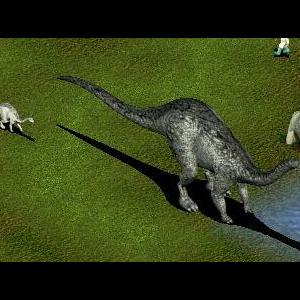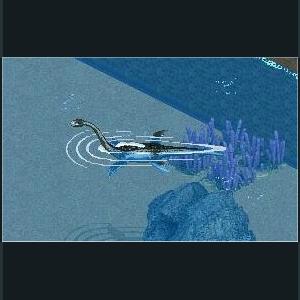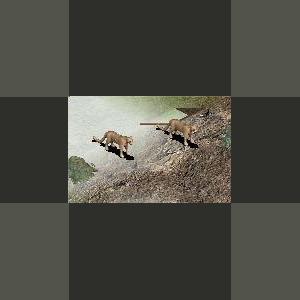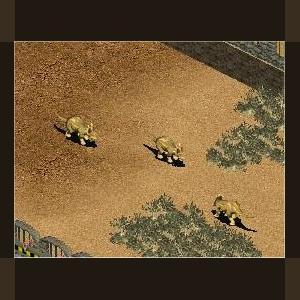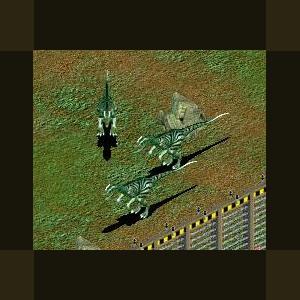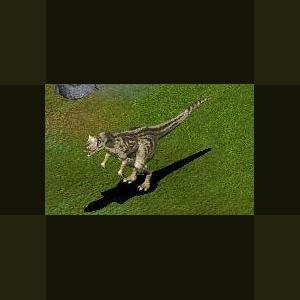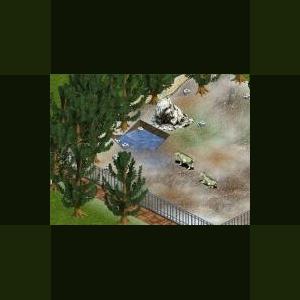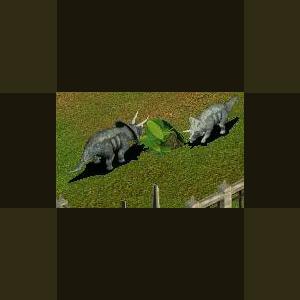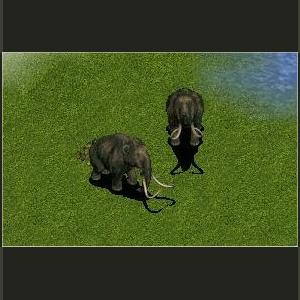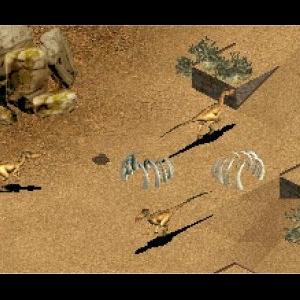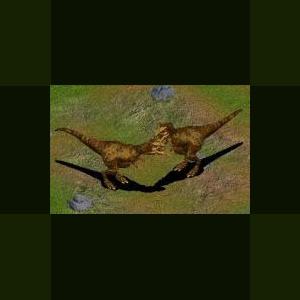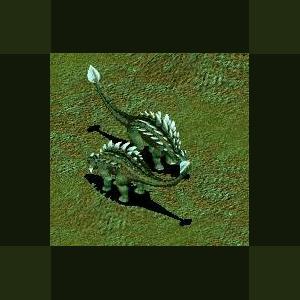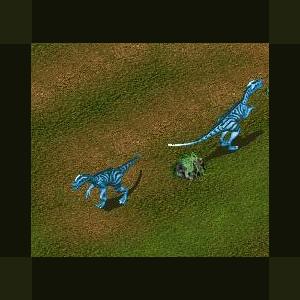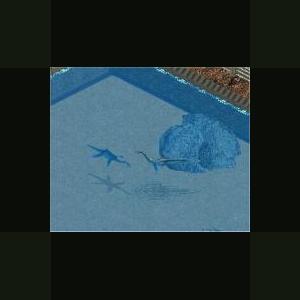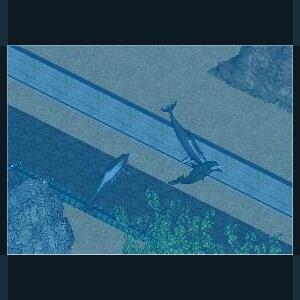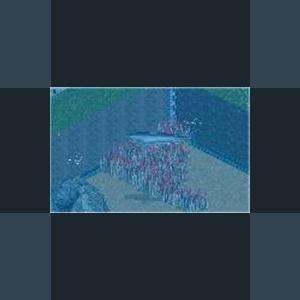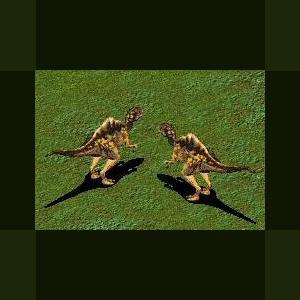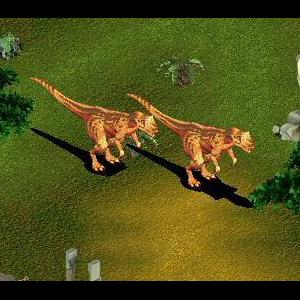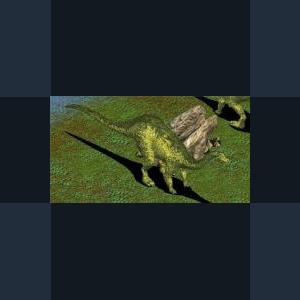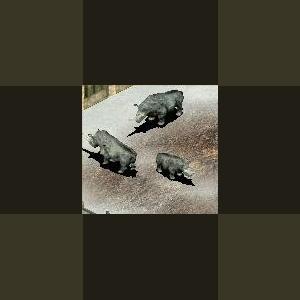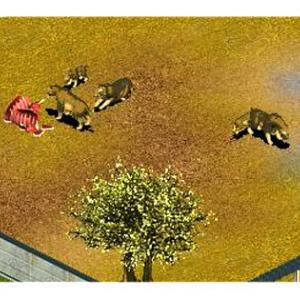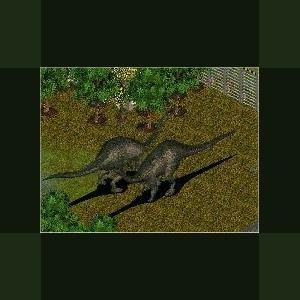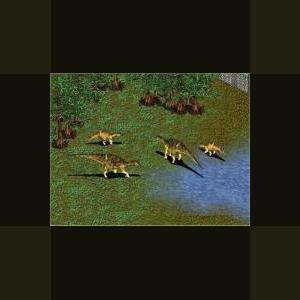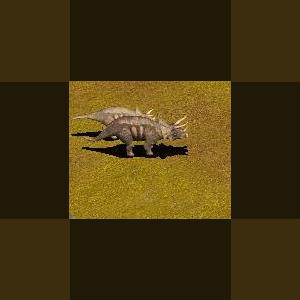Dinosaurs
Creatures from another age
241 files
-
Argentinosaurus by Moondawg
By Guest
Argentinosaurus (meaning "Argentina lizard") was a herbivorous sauropod dinosaur genus that was quite possibly the largest, heaviest land animal that ever lived. It developed on the island continent of South America during the middle of the Cretaceous Period (around 100 million years ago), after all of its more familiar Laurasian Jurassic kin — like Apatosaurus — had long disappeared.
Not much of Argentinosaurus has been recovered: just some back vertebrae, tibia, fragmentary ribs, and sacrum. One vertebra had a length of 1.3 meters and the tibia was about 155 centimeters (58 inches). However, the spectacular proportions of these bones and comparisons with other sauropod relatives allow paleontologists to estimate the size of the animal. Early reconstructions estimated Argentinosaurus at 35 meters (115 ft) in length and a weight of perhaps 80 to 100 tonnes. More recent estimates based on Saltasaurus, Opisthocoelicaudia and Rapetosaurus suggest sizes around 22-26 meters (72 - 85 ft).[1] It is the largest dinosaur for which there exists good evidence. Although it might have been smaller than Bruhathkayosaurus, which may have reached 44 meters (144 ft) in length and weighed 180 tons (however like Argentinosaurus it has been estimated shorter, at 28-34 meters (92-112 ft)), as well as the poorly known Amphicoelias fragilimus, which may have been up to 60 meters (200 ft) long, these estimates cannot be validated due to lack of evidence.
Vast wings on the vertebrae suited the attachment of massive muscles
The type species of Argentinosaurus, A. huinculensis, was described and published (by the Argentinian palaeontologists José F. Bonaparte and Rodolfo Coria) in 1993. Its more specific time-frame within the Cretaceous is the Albian to Cenomanian epochs, 112.2 to 93.5 million years ago. The fossil discovery site is in the Río Limay Formation in Neuquén Province, Argentina
Argentinosaurus is featured prominently in the permanent exhibition Giants of the Mesozoic at Fernbank Museum of Natural History in Atlanta, Georgia, USA. This display depicts a hypothetical encounter between Argentinosaurus and the carnivorous theropod dinosaur Giganotosaurus. Contemporary fossils of Cretaceous Period plants and animals are included in the exhibition, including two species of pterosaurs, providing a snapshot of a prehistoric ecosystem in what is now the modern Patagonia region of Argentina. At 123 feet (37 m) long, this skeletal reconstruction represents the largest dinosaur mount ever to be assembled.
602 downloads
0 comments
Updated
-
Elasmosaurus by Ghirin
By Guest
Elasmosaurus Author: Ghirin
Elasmosaurus ("Metal Plate Lizard") is a genus of large plesiosaurs known for their long necks. This genus contains several species with E. platyurus being the prototype specimen.
*Inspired by the Zoo Tycoon Brains Trust at the Zoo Tek Evolved Forums.*
555 downloads
0 comments
Updated
-
American Lion by Moondawg
By Guest
The American lion (Panthera leo atrox) also known as the North American or American cave lion, is an extinct feline known from fossils.
It was one of the largest subspecies of lion to have ever existed, comparable in size to the Early Middle Pleistocene primitive
cave lion Panthera leo fossilis and was about 25% larger than the modern African lion.
The American lion is an extinct animal which originated in North America and went on to
colonize part of South America as part of the Great American Interchange. The body length
of the American lion is estimated to have been 1.6-2.5 m (5.25-8.20 feet). Thus it was
comparable in size to its close relative, the extinct lion, Panthera leo fossilis, or the
modern species of Siberian tiger, but still smaller than their contemporary competitor for
prey, the Giant short-faced bear, which was the largest carnivoran of their era.
Approximately one hundred specimens of American lions have been recovered from the La Brea
Tar Pits, in Los Angeles, so their body structure is well known. The features and teeth of
the extinct American lion strongly resemble modern lions, but they were considerably larger.
South of Alaska, the American lion first appeared during the Sangamonian (the last
interglacial). After that it was widespread in the Americas from Alaska to Peru, although
it was absent from eastern North America and peninsular Florida. As did many other large
mammals, it went extinct at the end of the Pleistocene, about 10,000 years ago. By then
the American lion was one of the abundant Pleistocene megafauna, a wide variety of very
large mammals who lived during the Pleistocene. Remains are most common in the Yukon and
from the La Brea Tar Pits.
528 downloads
0 comments
Updated
-
Protoceratops by Ghirin
By Guest
Protoceratops ("Before the horned-faces") is well known from numerous skeletons, ranging from young animals to adults. It was a common dinosaur from Cretaceous Mongolia.
Reference:
The Illustrated Encyclopedia of Dinosaurs by Dougal Dixon. 2006
www.wikipedia.com
Created by Ghirin 2006
505 downloads
Updated
-
Dilophosaurus by Moondawg
By Guest
Dilophosaurus
Dilophosaurus was a theropod dinosaur from the Early Jurassic Period. The name is pronounced ("dy-LOH-fo-sawr-us") meaning 'two-crested lizard', because it had two crests (Greek di meaning 'two', lophos meaning 'crest' and sauros meaning 'lizard')
Dilophosaurus measured around six meters (20 ft) long and may have weighed half a ton.
The most distinctive characteristic of Dilophosaurus is the pair of rounded crests on its skull, possibly used for display. Studies by Robert Gay show no indication that sexual dimorphism was present in the skeleton of Dilophosaurus, but says nothing about crest variation. The teeth of Dilophosaurus are long, but have a fairly small base and expand basally. Another skull feature was a notch behind the first row of teeth, giving Dilophosaurus an almost crocodile-like appearance, similar to the putatively piscivorous spinosaurid dinosaurs. This "notch" existed by virtue of a weak connection between the premaxillary and maxillary bones of the skull. This conformation led to the early hypothesis that Dilophosaurus scavenged off dead carcasses, with the front teeth being too weak to bring down and hold large prey.
The first Dilophosaurus specimens were discovered by Sam Welles in the summer of 1942. The specimen was brought back to Berkeley for cleaning and mounting, where it was given the name Megalosaurus wetherilli. Returning to the same formation a decade later to determine from which time period the bones dated, Welles found a new specimen not far from the location of the previous discovery. The specimens were later renamed Dilophosaurus, based on the double crest clearly visible in the new skeleton.
There is another species of Dilophosaurus (D. sinensis), which may or may not belong to this genus. It is possibly closer to the bizarre Antarctic theropod Cryolophosaurus, based on the fact that the anterior end of the jugal does not participate in the internal antorbital fenestra and that the maxillary tooth row is completely in front of the orbit and ends anterior to the vertical strut of the lacrimal. This species was recovered from the Yunnan Province of China in 1987, with the prosauropod Yunnanosaurus and later described and named in 1993 by Shaojin Hu.
A third species, D. breedorum, was coined by Samuel Welles through Welles and Pickering (1999). This species was based upon crested specimen UCMP 77270. Welles' original material lacked well-preserved crests, and he suggested that the crested specimens pertained to a different species. He was unable to complete a manuscript describing this during his lifetime, and the name eventually came out in a private publication distributed by Pickering. This species has not been accepted as valid in other reviews of the genus.
Dilophosaurus was prominently featured both in the 1993 movie Jurassic Park and in the original novel by Michael Crichton. In the film version, Dilophosaurus has a retractable neck frill around its neck (much like a frill-necked lizard), and spits blinding poison, aiming for the eyes to blind and paralyze its prey (much like a spitting cobra). There is no evidence to support either the frill or the venom spitting, which was acknowledged by Crichton as creative license.In the film, Steven Spielberg also reduced the size of Dilophosaurus to 3 feet (0.91 m) tall and 5 feet (1.5 m) long, much smaller than it was in reality. Jurassic Park merchandise, including toys and video games (such as Jurassic Park: Operation Genesis and the arcade games The Lost World: Jurassic Park and Jurassic Park III), often include Dilophosaurus.
Despite its inaccuracies, the Jurassic Park Dilophosaurus has been taken up by others. Several other video games, such as ParaWorld and Jurassic Wars, and Ice Age: Dawn of the Dinosaurs feature Dilophosaurus modeled after the representations in Jurassic Park, and The Whitest Kids U'Know sketch "Dinosaur Rap", a music video for Trevor Moore's "Gettin' High With Dinosaurs" features a Dilophosaurus, complete with a short frill. One video game, 2008's Turok, features Dilophosaurus based more closely on real fossils and displays their correct size. Dilophosaurus was also featured in the documentary When Dinosaurs Roamed America, killing an Anchisaurus and scaring off a pack of Syntarsus (now known as Megapnosaurus).
http://en.wikipedia.org/wiki/Dilophosaurus
492 downloads
0 comments
Updated
-
Acrocanthosaurus by Moondawg
By Guest
Acrocanthosaurus (pronounced ak-ro-KAN-tho-SAWR-us; meaning 'high-spined lizard') is a genus of allosauroid theropod dinosaur that existed in what is now North America during the mid-Cretaceous Period
The skull of Acrocanthosaurus, like most other allosauroids, was long, low and narrow. The weight-reducing opening in front of the eye socket (antorbital fenestra) was quite large, more than a quarter of the length of the skull and two-thirds of its height. The outside surface of the maxilla (upper jaw bone) and the upper surface of the nasal bone on the roof of the snout were not nearly as rough-textured as those of Giganotosaurus or Carcharodontosaurus. Long, low ridges arose from the nasal bones, running along each side of the snout from the nostril back to the eye, where they continued onto the lacrimal bones. This is a characteristic feature of all allosauroids. Unlike Allosaurus, there was no prominent crest on the lacrimal bone in front of the eye. The lacrimal and postorbital bones met to form a thick brow over the eye, as seen in carcharodontosaurids and the unrelated abelisaurids. Nineteen curved, serrated teeth lined each side of the upper jaw, but a tooth count for the lower jaw has not been published. Acrocanthosaurus teeth were wider than those of Carcharodontosaurus and did not have the wrinkled texture that characterized the carcharodontosaurids. The dentary (tooth-bearing lower jaw bone) was squared off at the front edge, as in Giganotosaurus, and shallow, while the rest of the jaw behind it became very deep. Acrocanthosaurus and Giganotosaurus shared a thick horizontal ridge on the outside surface of the surangular bone of the lower jaw, underneath the articulation with the skull.
484 downloads
Updated
-
Anatotitan by Ghirin
By Guest
Anatotitan
Author: Ghirin
Anatotitan ("Giant Duck") was a large flat-headed hadrosaur from North America. In older literature, Anatotitan was listed as Anatosaurus or Trachodon.
*Inspired by the Zoo Tycoon Brain Trust at the Zoo Tek Evolved Forums
475 downloads
0 comments
Updated
-
Arctic Homotherium Serum by Ghirin
By Guest
The saber-toothed cats were one of the major branches of the prehistoric felines.
The genus Homotherium contained lion-sized felines with laterally flattened canines, unlike the conical canines of modern cats. Homotherium fossils have been found in both Pleistocene North America (H. serum) and Eurasia (H. latidens) and these cats were probably specialists in hunting young pachyderms such as mammoths.
White variants naturally occur in todays lion and tiger populations, but such a color is usually a disadvantage. However, a pale coat might have been an advantage to populations of Homotherium living in areas with extensive snow cover (Alaska, Siberia).
456 downloads
0 comments
Updated
-
Anchiceratops by Moondawg
By Guest
American paleontologist Barnum Brown named Anchiceratops in 1914, as he believed Anchiceratops was a transitional form closely related to both Monoclonius and Triceratops and intermediate between them.
There is one valid species known today (A. ornatus), whose name refers to the ornate margin of its frill. A second species was named A. longirostris by Charles M. Sternberg in 1929, but this species is widely considered a junior synonym of A. ornatus today.
The first remains of Anchiceratops were discovered along the Red Deer River in the Canadian province of Alberta in 1912 by an expedition led by Barnum Brown.The holotype is the back half of a skull, including the long frill,and several other partial skulls were found at the same time, which are now stored in the American Museum of Natural History in New York City. A complete skull was discovered by C.M. Sternberg in 1924, and described as A. longirostris five years later. Another specimen, collected by Sternberg in 1925, lacks the skull but is otherwise the most complete skeleton known from any ceratopsid, preserving a complete spinal column down to the last tail vertebra. Sternberg's material is now housed in the Canadian Museum of Nature in Ottawa. Other material has been found since, including one or two bonebed deposits in Alberta, but very little Anchiceratops material has been described.
Anchiceratops ornatus.Anchiceratops frills are very distinctive. Rectangular in shape, the frill is edged by large epoccipitals (triangular bony projections), and has smaller fenestrae (window-like openings) than those seen in other chasmosaurines like Pentaceratops and Torosaurus.Another characteristic feature is the pair of bony knobs located on either side of the midline, towards the end of the frill.
Most Anchiceratops fossils have been discovered in the Horseshoe Canyon Formation of Alberta, which belongs to the early part of the Maastrichtian stage of the Late Cretaceous Period (74-70 million years ago). Frill fragments found in the early Maastrichtian Almond Formation of Wyoming in the United States resemble Anchiceratops (Farke, 2004). However, pieces of a frill have been found from two localities in the older Dinosaur Park Formation (late Campanian, 78-74 million years ago) with the characteristic pattern of points seen in Anchiceratops frills. This may represent an early record of A. ornatus or possibly a second, related species (Langston, 1959).
453 downloads
0 comments
Updated
-
Steppe Mammoth by Ghirin
By Guest
Steppe Mammoth by Ghirin
The steppe mammoth (Mammuthus trogontherii) lived on the steppes that covered large portions of Eurasia.
This grassland was south of the ice sheets, but was still colder than the steppes of today.
The steppe mammoth may be descended from the ancestral mammoth, Mammathus mridionalis. It gave rise to the woolly mammoth of the late Pleistocene.
*Inspired by the Zoo tycoons brains trust at the Zoo Tek Evolved Forums.*
441 downloads
0 comments
Updated
-
Desert Velociraptor by Ghirin
By Guest
Desert Velociraptor
Author: Ghirin
During the late Cretaceous Period, the area now known as the Gobi Desert had a semi-arid climate. The fossils of many species of dinosaurs have been found there, such as Protoceratops, Oviraptor, and Velociraptor.
Velociraptor was a fierce predator that might have lived in hunting packs. A fossil of a Velociraptor and a Protoceratops locked in battle indicates that this therapod was a predator of Protoceratops.
Reference:
Encyclopedia of Dinosaurs and Other Prehistoric Creatures. Malam and Parker, 2003
Created by Ghirin 2004
441 downloads
0 comments
Updated
-
Albertosaurus by Moondawg
By Guest
Albertosaurus (pronounced ; meaning 'Alberta lizard') is a genus of tyrannosaurid theropod dinosaur that lived in western North America during the Late Cretaceous Period,
As a tyrannosaurid, Albertosaurus was a bipedal predator with tiny, two-fingered hands and a massive head with dozens of large, sharp teeth. It may have been at the top of the food chain in its local ecosystem. Although relatively large for a theropod, Albertosaurus was much smaller than its more famous relativeTyrannosaurus, probably weighing less than 2 metric tons.
Fossils of more than thirty individuals have been recovered, providing scientists with a more detailed knowledge of Albertosaurus anatomy than is available for most other tyrannosaurids. The discovery of 22 individuals at one site provides evidence of pack behavior and allows studies of ontogeny and population biology which are impossible with
lesser-known dinosaurs
432 downloads
Updated
-
Bissektipelta by Moondawg
By Guest
Bissektipelta is an ankylosaurid dinosaur from the Upper Cretaceous of Uzbekistan. The holotype and only known specimen was collected from the Bissekty Formation (lateTuronian-Coniacian).
The holotype consists of a braincase and incomplete skull roof, along with isolated teeth and osteoderms. Originally, this material was referred to the genus "Amtosaurus", but was reassigned to a new taxon when that genus was declared a nomen dubium. Bissektipelta is presently monospecific, containing only B. archibaldi. The holotype was collected in September of 1998 by the joint Usbek-Russian-British-American-Project. This specimen can be distinguished from "A. magnus" in having three exits for N. hypoglossus instead of two, by the lesser angle between ventral surfaces of basisoccipital and basisphenoid, and by the more caudally situated basispterygoid processes.
421 downloads
Updated
-
Atlascopcosaurus by Moondawg
By Guest
Atlascopcosaurus
Atlascopcosaurus (meaning "Atlas Copco lizard") is the name given to a genus of hypsilophodont dinosaur. It lived in what is now Australia; the type specimen, Atlascopcosaurus loadsi, was found at Dinosaur Cove in Victoria. It was about 2-3 metres (6.5-10 ft) long and weighed roughly 125 kg. It lived during the early Cretaceous (Aptian-Albian), but not much else is known about it; the genus is based on a mostly incomplete skeleton (the holotype consists of a piece of maxilla and teeth).
It was named after the Atlas Copco Company who had provided equipment for the expeditions that discovered this dinosaur in 1984. The project revealed 85 fossil bone fragments. This opened the door for more excavation and, along with other companies, Atlas Copco helped excavate about 60 metres of tunnel over 10 years.
The species name, loadsi, refers to William Loads, the state manager for Atlas Copco at the time, who assisted during the dig.
412 downloads
Updated
-
Attenborosaurusby Ghirin
By Guest
Attenborosaurus
Author: Ghirin
The genus Attenborosaurus was named in honor of British naturalist Sir David Attenborough. Its fossils were found in Europe and were originally classified as a species of Plesiosaurus.
Attenborosaurus is fully compatible with Cryptocleidus.
407 downloads
0 comments
Updated
-
Prosqualodon by Ghirin
By Guest
Prosqualodon by Ghirin
Prosqualodon ("Before the Shark-Tooth") was a toothed whale that resembled a modern dolphin in both size and build. It's teeth, however, were more like the ancient shark-toothed whales than the modern toothed whales. It lived during the Oligocene and the Miocene eras.
399 downloads
0 comments
Updated
-
Cretoxyrhina by Ghirin
By Guest
Cretoxyrhina mantelli
Author Ghirin
The genus Cretoxyrhina was a member of the lamniform sharks from the late Cretaceous period. Its remains, mainly teeth, have been found worldwide. A large species, C. mantelli, has been found in what was the interior seaway of North America. It was similar in size to the modern great, white shark, but was not a close relative.
Like the modern great white shark, C. mantelli was an apex predator, feeding on marine reptiles such as moasaurs. The shark was nicknamed Ginsu due to the damage inflicted on its prey
395 downloads
0 comments
Updated
-
Suchomimus by Moondawg
By Guest
Suchomimus
Suchomimus ("crocodile mimic") is a genus of large spinosaurid dinosaur with a crocodile-like mouth that lived 110 to 120 million years ago, during the middle portion of the Cretaceous period in Africa.
Unlike most giant theropods, Suchomimus had a very long, low snout and narrow jaws studded with some 100 teeth, not very sharp and curving slightly backward. The tip of the snout was enlarged and carried a "rosette" of longer teeth. The animal is reminiscent of crocodilians that eat mainly fish, such as the living gharial, a type of large crocodile with a very long, slim snout, from the region of India.
Suchomimus also had a tall extension of its vertebrae which may have held up some kind of low flap, ridge or sail of skin, as seen in much more exaggerated form in Spinosaurus. Detailed study shows that the specimen of Suchomimus was a subadult about 11 meters (36 ft) in length, but scientists think that it may have grown to about 12 meters (40 ft) long, approaching the size of Tyrannosaurus. The overall impression is of a massive and powerful creature that ate fish and presumably other sorts of meat (carrion, if naught else) more than 100 million years ago, when the Sahara was a lush, swampy habitat.
Suchomimus has been placed among the spinosaurids, a group of predator-scavengers adapted for hunting fish but with frail bone structures (particularly their skulls), especially when compared to other similarly sized theropods, like the tyrannosaurids. Apart from the back ridge, Suchomimus was very similar to the spinosaurid Baryonyx which also had strong forelimbs and a huge sickle-curved claw on its "thumb". And, as with Baryonyx, the claw was the first fossil part to be noticed by palaeontologists. Suchomimus was considerably larger than Baryonyx, but a few paleontologists have suggested that the latter might almost have been a juvenile of the former.
After discovering new specimens of Carcharodontosaurus and Sarcosuchus, Chicago-based palaeontologist Paul Sereno and his team added a discovery in 1997. In the Sahara, near the Tenere Desert in Niger, they found fossils that represented about two-thirds of the skeleton of a huge meat-eater. This was named Suchomimus ("crocodile mimic") after the shape of its head.
390 downloads
0 comments
Updated
-
Afrovenator by Moondawg
By Guest
Afrovenator ("African hunter") is a genus of megalosaurid theropod dinosaur from the Early Cretaceous Period of northern Africa.
It was a bipedal predator, with a mouthful of sharp teeth and three claws on each hand. Judging from the one skeleton known, this dinosaur was approximately 30 feet (9 meters) long from snout to tail tip.
The generic name comes from the Latin prefix afro- ("from Africa") venator ("hunter"). There is one named species, A. abakensis. The name refers to its predatory nature, and its location in Africa, specifically from In Abaka, the Tuareg name for the region of Niger where the fossils were found. The original description of both genus and species is found in a 1994 paper which appeared in the prestigious journal Science. The primary author was well-known American paleontologist Paul Sereno, with Jeffrey Wilson, Hans Larsson, Didier Dutheil, and Hans-Dieter Sues as coauthors.
The remains of Afrovenator were discovered in the Tiourarén Formation of the department of Agadez in Niger. The Tiourarén most likely represents the Hauterivian to Barremian stages of the Early Cretaceous Period, or approximately 136 to 125 million years ago (Sereno et al. 1994). The sauropod Jobaria, whose remains were first mentioned in the same paper which named Afrovenator, is also known from this formation.
Afrovenator is known from a single nearly complete skeleton, featuring most of the skull (minus the mandible, or lower jaw), parts of the spinal column, hands, and forelimbs, a nearly complete pelvis, and complete hind limbs. This skeleton is housed at the University of Chicago.
Most analyses place Afrovenator within Megalosauridae, which was formerly a "wastebasket family" which contained many large and hard-to-classify theropods, but has since been redefined in a meaningful way, as a sister taxon to the family Spinosauridae within the Spinosauroidea.
A 2002 analysis, focused mainly on the noasaurids, found Afrovenator to be a basal megalosaurid. However, it did not include Dubreuillosaurus (formerly Poekilopleuron valesdunesis), which could affect the results in that region of the cladogram (Carrano et al. 2002).
Other recent, more complete, cladistic analyses show Afrovenator in a subfamily of Megalosauridae with Eustreptospondylus and Dubreuillosaurus. This subfamily is either called Megalosaurinae (Allain 2002) or Eustreptospondylinae (Holtz et al. 2004). The latter study also includes Piatnitzkysaurus in this subfamily.
A few alternative hypotheses have been presented for Afrovenator's relationships.
382 downloads
Updated
-
Alamosaurus by Moondawg
By Guest
Alamosaurus, ("meaning "Alamo lizard"), is a genus of titanosaurian sauropod dinosaur from the Late Cretaceous Period of what is now North America.
Contrary to popular assertions, this dinosaur is not named after the Alamo in San Antonio, Texas, or the battle that was fought there. The holotype, or original specimen, was discovered in New Mexico and, at the time of its naming, Alamosaurus had not yet been found in Texas. Instead, the name Alamosaurus comes from Ojo Alamo, the former name for the geologic formation in which it was found (that part of the Ojo Alamo Formation has since been reassigned to Kirtland Shale) and which was, in turn, named after the nearby Ojo Alamo trading post. The term alamo itself is a Spanish word meaning "poplar" and is used for the local subspecies of cottonwood tree. The term saurus is derived from saura , Greek for "lizard" and is the most common suffix used in dinosaur names. There is one species (A. sanjuanensis), which is named after San Juan County, New Mexico, where the first remains were found. Both genus and species were named by Smithsonian paleontologist Charles W. Gilmore in 1922.
Alamosaurus is undoubtedly a derived member of Titanosauria, but relationships within that group are far from certain. One major analysis unites Alamosaurus with Opisthocoelicaudia in a subfamily Opisthocoelicaudinae of the family Saltasauridae (Wilson, 2002). A major competing analysis finds Alamosaurus as a sister taxon to Pellegrinisaurus, with both genera located just outside Saltasauridae (Upchurch et al., 2004). Other scientists have also noted particular similarities with the saltasaurid Neuquensaurus and the BrazilianTrigonosaurus (the "Peiropolis titanosaur") which is used in many cladistic and morphologic analyses of titanosaurians (Lehman and Coulson, 2002).
375 downloads
0 comments
Updated
-
Elasmotherium by Moondawg
By Guest
Elasmotherium ("Thin-Plate Beast") was a genus of giant rhinoceri which stood, on average, two meters (7 feet) high and six meters (20 feet) long, with a single two-meter-long horn in the forehead.
The genus appeared during the Late Pliocene in Central Asia, being derived from the genus Sinotherium. E. inexpectatum and E. peii inhabited Eastern China during the Upper Pliocene to Early Pleistocene. They disappeared approximately 1.6 Ma. The earliest records of Elasmotherium species in Russia are known from the Upper Pliocene assemblages near the Black Sea. E. caucasicum was widely distributed in this area between 1.1 Ma and 0.8 Ma. The more advanced (and largest member of the genus) E. sibiricum appeared in the Middle Pleistocene. It occupied all of the southwestern part of Russia, reaching eastward to western Siberia, then south into Ukraine and Moldova. Elasmotherians persisted in eastern Europe until the end of the Middle Pleistocene.
Made by request for Pukkie
375 downloads
0 comments
Updated
-
Machairodus Giganteus by Ghirin
By Guest
Machairodus was a genus of large saber-toothed cats found in Eurasia, Africa and North America. These sabertooths thrived over the period covered by the mid-Miocene to the mid-Pliocene (15 to 2 million).
Machairodus giganteus, the size of a modern lion or tiger, was the largest and most specialized member the genus in Eurasia. Its skull was longer and narrower than a modern lion and the teeth had serrations along the edges.; in addition, M. giganteus also had longer legs than some other species of Machairodus. There was a small flange on either side of the chin to provide support for the sabers when the mouth was closed.
It lived in mixed habitats of savannah and broadleaf evergreen trees and might have had a lifestyle similar to that of modern lions. M. giganteus also might have had a tawny brown coat to help it blend in with its surroundings.
Referrences:
Big Cats and Their Fossil Relatives by Anton, Clark and Turner, 2000.
Mammoths, Sabertooths and Hominids by Agusti and Anton, 2002.
http://www.bluelion.org/lowgraphmachairodus.htm
Created by Ghirin 2003
373 downloads
0 comments
Updated
-
Diplodocus by Ghirin
By Guest
Diplodocus ("Double Beam") was one of the sauropods found during the North American "Bone Rush" of the late 1800's. At that time, Diplodocus was the longest known dinosaur, though more recently discovered dinosaurs such as Supersaurus are longer. Even with its great length, Diplodocus was relatively light-weight (compared to Barosaurus and Apatosaurus).
Diplodocus' long, sloping skull became the type for a group of dinosaurs with similar skulls (the Diplodocidae). Other important features of Diplodocus include a long tail with a whip-like ending (possibly an anti-predator defense), a long neck, and skid-like projections on the vertebra of the middle tail region.
References:
http://dinosauricon....diplodocus.html
Encyclopedia of Dinosaurs and Other Prehistoric Creatures. Malam and Parker, 2002
Dinosaurs. Parker, 2003
Created by Ghirin 2004
368 downloads
0 comments
Updated
-
Edmontosaurus by Ghirin
By Guest
Edmontosaurs
Author: Ghirin
Edmontosaurus was the most abundant genus of herbivore at the end of the Cretaceous period. Many skeletons have been found, including ones with mummified skin.
*Inspired by the Zoo Tycoon Brain Trust at the Zoo Tek Evovled Forums*
363 downloads
0 comments
Updated
-
Arrhinoceratops by Moondawg
By Guest
Arrhinoceratops belonged to the Ceratopsinae (previously known as Chasmosaurinae) within the Ceratopsia (the name is Ancient Greek for "horned face"), a group of herbivorous dinosaurs with parrot-like beaks which thrived in North America and Asia during the Cretaceous Period, which ended roughly 65 million years ago. It appears to be closely related to Torosaurus.
Since this dinosaur is known only from its skull, scientists know little about its over-all anatomy. The skull features a broad neck frill with two oval shaped openings.
Its brow horns were moderately long, but its nose horn was shorter and blunter than most Ceratopsians
Its body is assumed to be typical of the Ceratopsians, and based on the skull it is estimated to be 6 m (20 ft) long when fully grown.
Arrhinoceratops, like all Ceratopsians, was a herbivore. During the Cretaceous, flowering plants were "geographically limited on the landscape", and so it is likely that this dinosaur fed on the predominant plants of the era: ferns, cycads and conifers. It would have used its sharp Ceratopsian beak to bite off the leaves or needles.
359 downloads
0 comments
Updated

